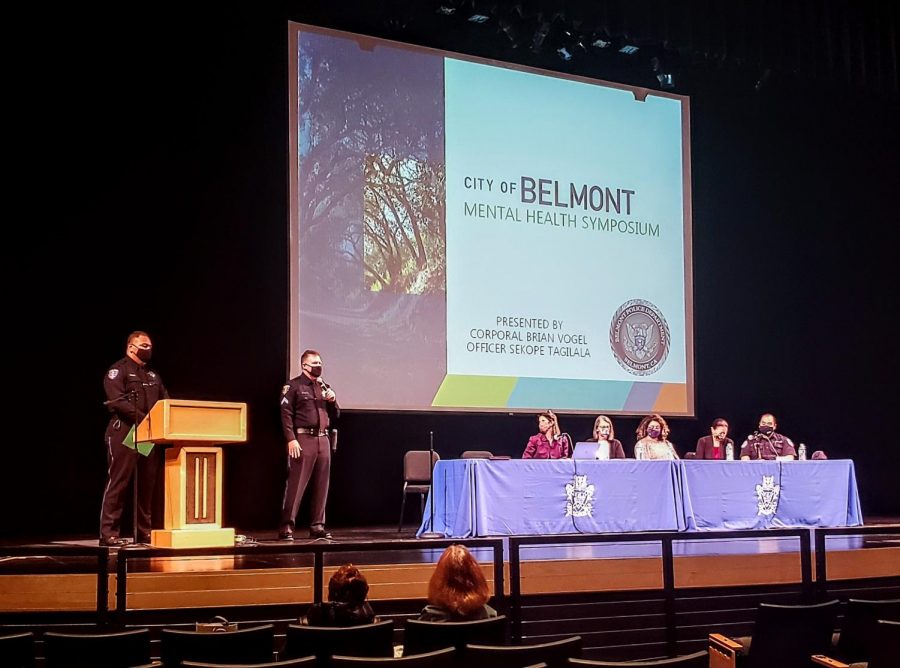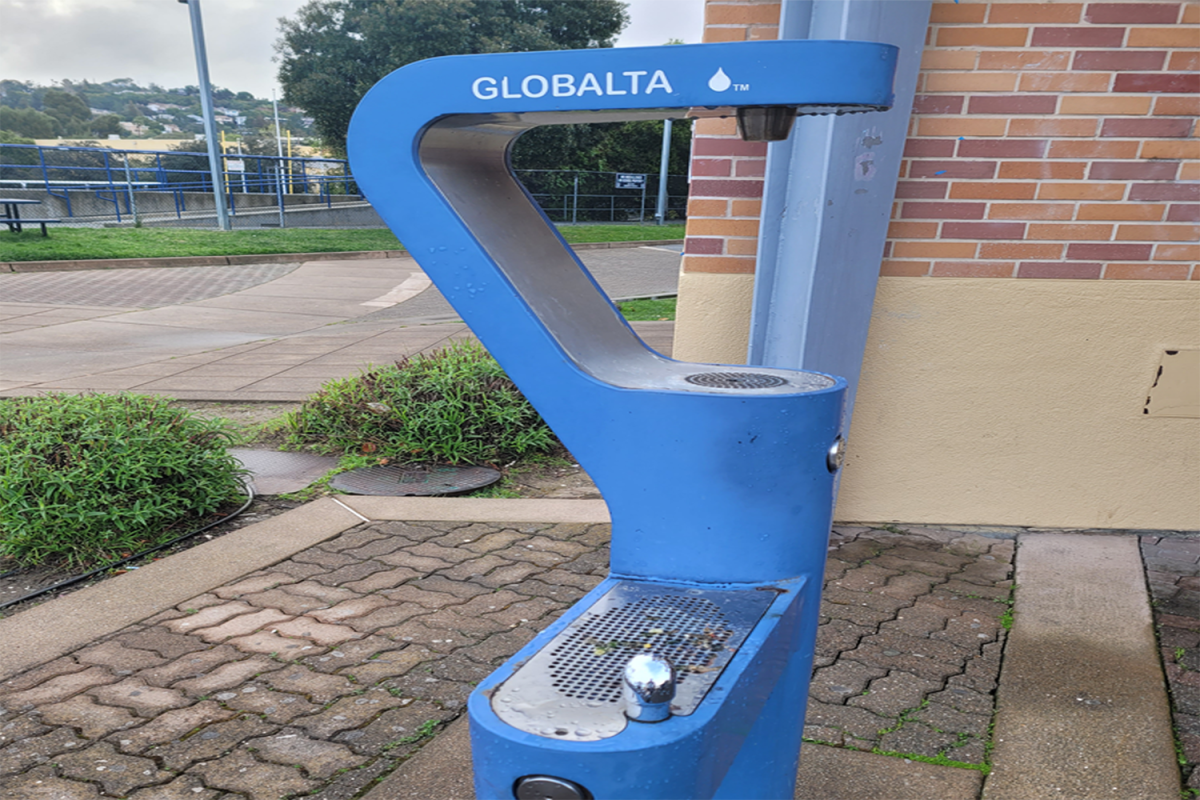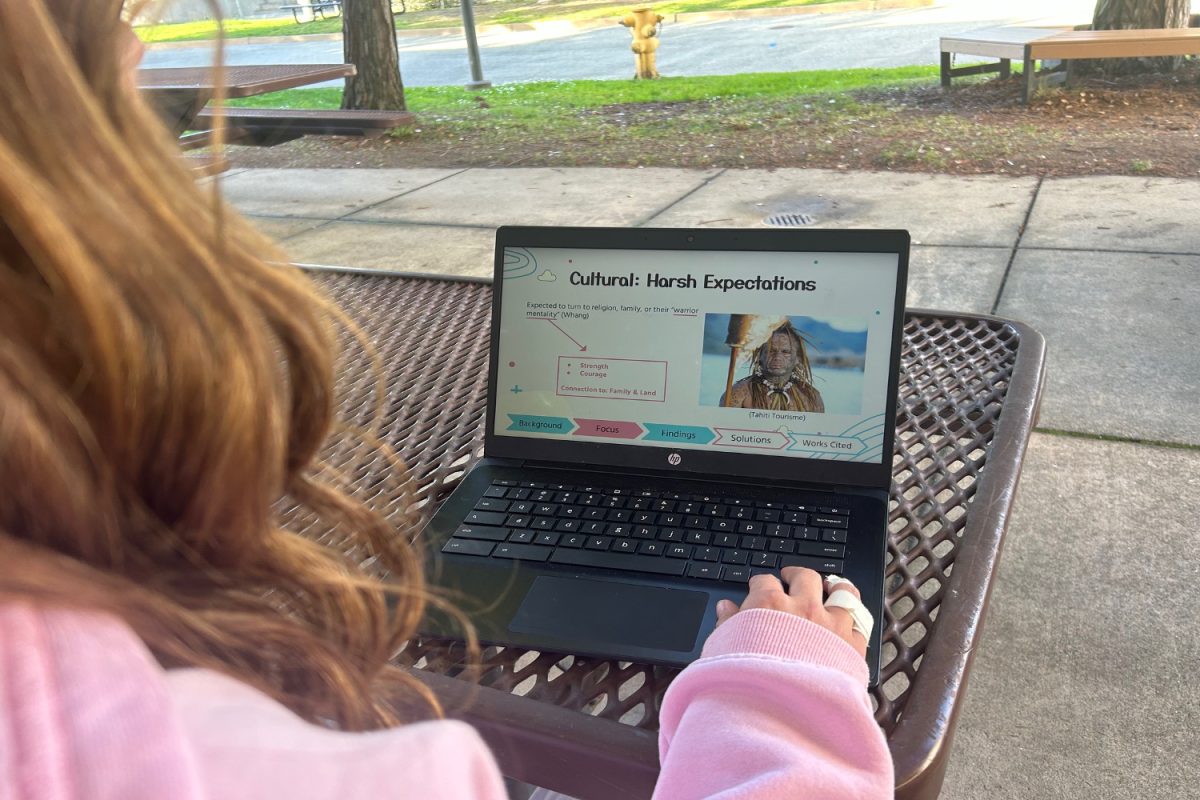The Belmont Police Department (BPD) hosted a presentation at Carlmont’s Performing Arts Center featuring several mental health associations to inform people about mental illnesses on Thursday, Nov. 4.
The organizations Star Vista, the National Alliance on Mental Illness (NAMI), the San Mateo Assessment and Referral Team (SMART), the Notre Dame psychology department, the BPD, and the San Mateo County Behavioral Health and Recovery Services (BHRS) all had representatives speak at the presentation. During the symposium, these speakers went deeper than simply talking about mental health. They discussed the mental illnesses themselves, the signs of a mental disorder, how to deal with them, as well as resources to get help.
“The premise behind it was part of a group that is through the city council and the police department to open communications. And during that open communication, it was brought up about what the law enforcement does with mental health and what can we do to expand community knowledge around mental illness,” Brian Vogel, a corporal for the BPD said.
Speaking first was the Vice Mayor of Belmont, Julia Mates. She went into greater detail about the purpose of the presentation, saying that it was a continuation of the increased awareness efforts being made after the pandemic, which caused an increase in mental health issues. Mates then introduced the organizations talking at the symposium.
Claudia Saggese, the representative for BHRS spoke next. She discussed significant topics like the true meaning behind mental health issues, as well as giving examples for mental disorders like anxiety, depression, and post-traumatic stress disorder (PTSD). On top of that, Saggese also mentioned how to assist and recognize people who may be struggling with mental health issues.
Another sizeable mental health support operation is Star Vista. Zena Andreani, manager of Star Vista’s crisis center, spoke representing the organization at the symposium. Andreani said that its services include a crisis hotline, teen crisis services, school and community presentations, and clinical services like youth stabilization opportunities and support.
Star Vista provides access to support services for teens for a number of issues through phone calls, in-person conversations, or online chat groups. All of the services are also anonymous.
“The teen crisis services, because it’s so anonymous if they say something like ‘Hey, I have this thing I’m thinking about and I don’t know if it’s anxiety or not’ it’s really a safe place, and it has people that have been through something similar,” Andreani said.
Similar to Star Vista, NAMI also offers many similar programs for aiding teens in need of help during crises.
“They have a text line, a chat line, and they are run by youth; people of your age,” Michael Lim, the Executive Director of Operations at NAMI, said. “They speak your language and understand your culture a little bit better than old fogies like me.”
Two other presenters, the BPD and SMART, informed the audience about their partnership on and off the field. SMART works with the police whenever they receive a call regarding a mental health situation since they are specially trained in handling that type of event. Vogel elaborated on the two departments’ work together, as well as the reason SMART comes into play during crises.
“A lot of people feel much more comfortable talking about mental illness with a paramedic than with a police officer,” Vogel said. “We don’t take it personally, it’s a different uniform.”
The evening was wrapped up with a presentation from Dr. Helen Marlo the chair of Notre Dame de Namur University’s Clinical Psychology Department. She talked about work-life integration, which is made up of the components of consciousness, rhythm, and connection.
“[The presentation] was about bringing all crisis-type services together to really start to connect,” Andreani said. “Our hope was to try to start helping the community understand and navigate all the different types of crisis responses.”












